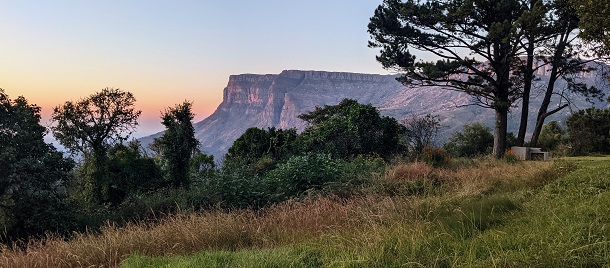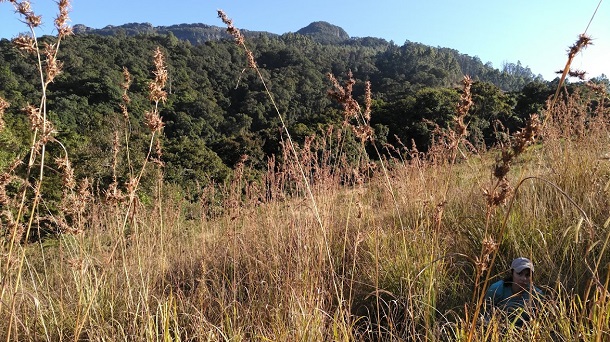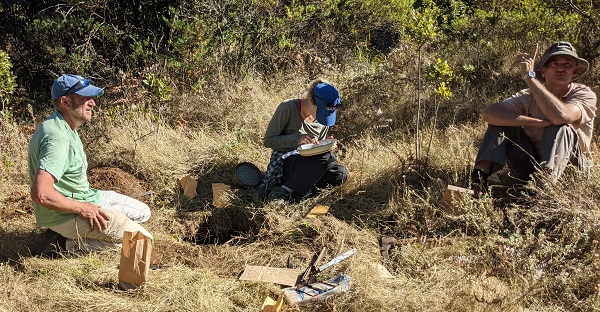Mariepskop Land-Use Change
We are using attributes of soil texture, chemistry, and stable isotopes (δ13C) by soil depth to understand legacies of afforestation in the northern escarpment of Mariepskop in South Africa. Mariepskop (1,947 m high) is among the highest peaks in the northern Drakensbergs. In the early 1900's, many of the montane grasslands of this region were cultivated to Australian Eucalypts as well as Patula Pine plantations, transforming the landscape from grassland to forest. Restoration efforts are now underway to remove these alien trees and recover the original ecosystem.

Hisotorically, Mariepskop was montane grasslands with patchy native forests kept in check by frequent fire. But over the past century, pine and Eucalypts were planted onto these hillsides. (photo by R. Keen)
The goal of this research is to understand the long-term belowground impacts of afforestation on the hillslopes of Mariepskop. The drastic land-cover change from native grassland to either eucalypt or pine plantation has likely had substantial impacts on soil structure, nutrient availability, soil carbon storage, and soil water infiltration dynamics.
To address these questions, we collected soil samples from remaining native grassland, native forest, pine plantation, and eucalypt plantation sites. Soil samples for carbon stable isotope analysis (δ13C) were collected down to 50 cm depth at each site, and will give insight into past land cover at each site as soil 13C reflects the type of vegetation (C4 grasses vs. C3 vegetation) present at a given site through time. Changes in soil texture, chemistry, and organic carbon content will also be determined from bulk soil samples from each site. In addition, field saturated hydraulic conductivity is being measured under each cover type to assess changes in infiltration rates after nearly a century of eucalypt or pine cover.

The grasslands at Marieskop are highly productive. If you look close, you can see Rachel amongst the C4 grasses.
Project supported by SAEON-Ndlovu Node
Project PI's:
Dr. Tony Swemmer (SAEON Ndlovu Node)
Dr. Jesse Nippert (Kansas State University)
Project Graduate Students:
Rachel Keen (Kansas State University)

Jesse, Emily, and Tony collecting soil samples in the field. It appears only Emily is working.